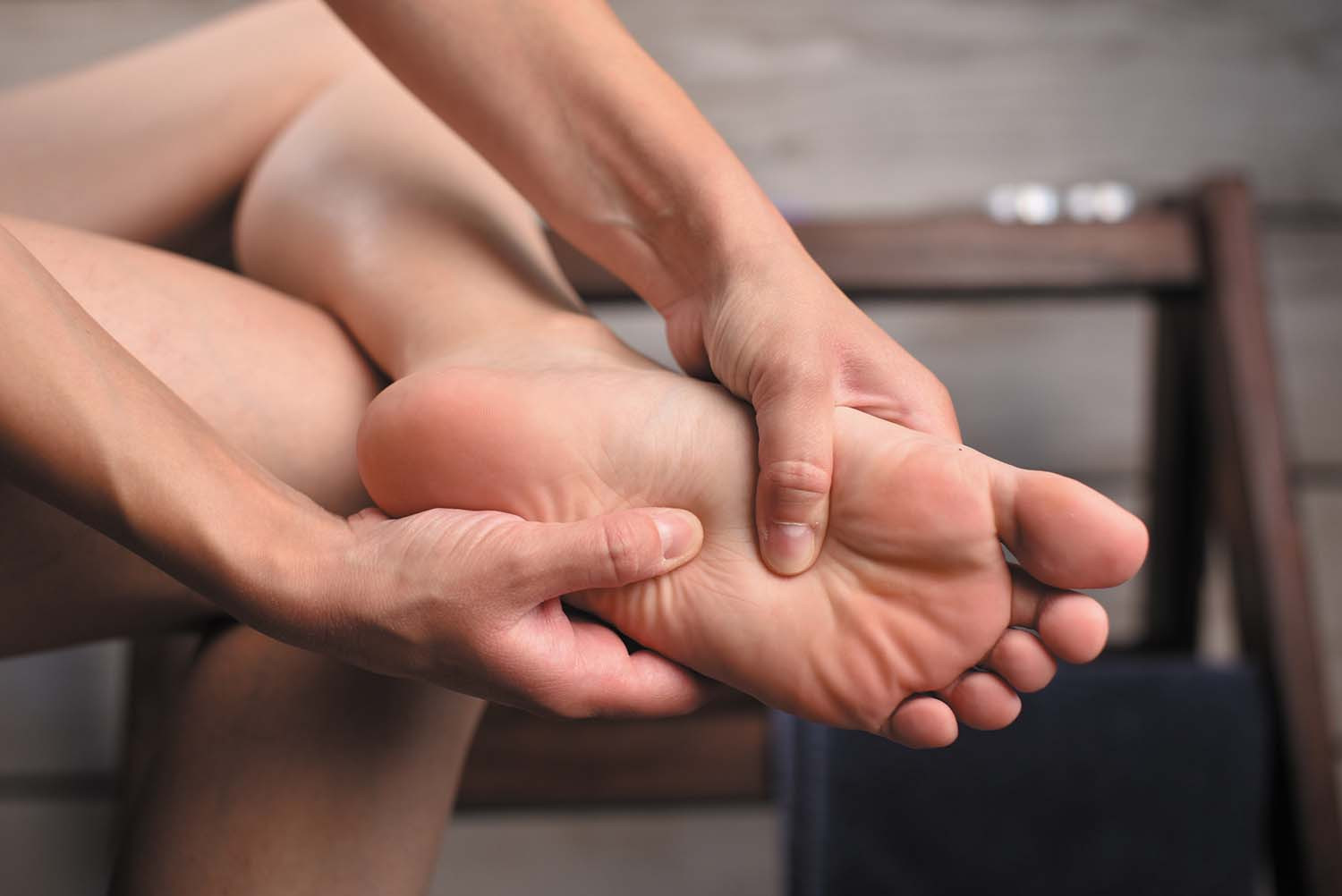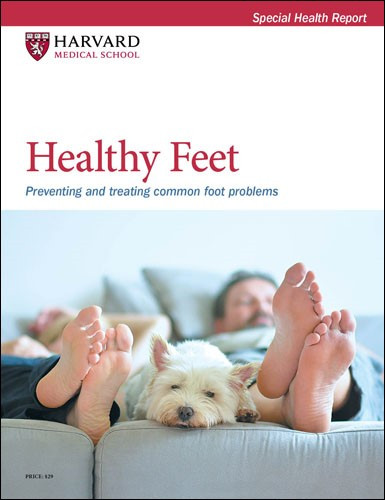Soleful aging
Our feet aren't immune to aging's effects. What problems can crop up as we step through the years?
- Reviewed by Toni Golen, MD, Editor in Chief, Harvard Women's Health Watch; Editorial Advisory Board Member, Harvard Health Publishing; Contributor

Just think of where your feet have taken you: you may have hiked countless trails, toured far-off cities, and chased endlessly after children and grandchildren. Just walking puts about 600 miles of wear and tear on the average American's feet every year — and the mileage can add up to a host of foot problems as time passes.
Just like the rest of the body, our feet are vulnerable to aging's effects — and certain factors can make the toll greater on women. Especially after 50, women are likelier than men to develop foot issues such as joint pain, collapsed arches, stress fractures, plantar fasciitis, and bunions.
What makes us more susceptible? In younger women, hormone fluctuations during pregnancy can prompt joints to become more lax, including in the feet. Older women have a higher incidence of decreased bone density (called osteopenia) that can leave us more vulnerable to stress fractures. And wearing high heels at any age doesn't do us any favors, greatly increasing the load on the front of our feet.
But regardless of sex, everyone's soft tissues loosen over time, inviting more foot problems, Harvard experts say. "As we age, our tissues become less elastic," explains Dr. Christopher Chiodo, chief of foot and ankle surgery at Harvard-affiliated Brigham and Women's Hospital. "Because of this, we can develop small tears in the soft tissues of our feet, our arches can collapse, and we can develop other problems such as Achilles tendinitis and plantar fasciitis."
Get the lowdown
How is aging hard on our feet? Here's a breakdown of foot conditions that can develop or worsen as we collect birthdays:
Stress fractures are tiny cracks in one or more bones in the foot. Often stemming from overuse, stress fractures can also result from weakened bones, causing pain in the foot that worsens with activity, as well as tenderness and swelling.
Plantar fasciitis involves inflammation of the plantar fascia, the band of soft tissue running along the bottom of your foot. Plantar fasciitis triggers sharp pain in the sole, near the heel, that's worse in the morning and after sitting. Carrying extra weight raises the odds of developing it, as does a sudden increase in high-impact activity or wearing shoes that don't provide much arch support.
Bunions are painful, bony bumps on the outside of your big toe joint. They tend to run in families and are likelier to develop if you wear shoes that are too tight. But simply getting older places you at higher risk. Bunions trigger pain in the side of the foot as well as causing the big toe joint to bulge to the side.
Flat feet occur when tendons, ligaments, and other soft tissue that support arches lose elasticity and collapse. It can run in families. Flat feet may cause your feet to tire more easily, and they can cause swelling and pain on the inner sides and soles of the feet.
Osteoarthritis is due to joint wear and tear that's often associated with aging. About three-quarters of people with osteoarthritis are 55 and over, while 60% are women. The hips, knees, hands, and spine are more commonly affected, but the ankles and feet aren't immune — especially because they house dozens of bones and joints.
Simple remedies
The good news? Most foot problems won't derail you for long. Simple measures, such as wearing comfortable, supportive, low-heeled shoes, can ease symptoms, as can switching to lower-impact exercises (such as swimming or biking) to give your feet a break. Your doctor may also recommend applying ice and stretching the feet gently, or taking over-the-counter anti-inflammatory pain relievers such as ibuprofen (Advil) or naproxen (Aleve).
But if foot pain lasts longer than a week or two, it's important to consult a podiatrist or an orthopedic foot and ankle specialist. Why? It's often difficult to discern one foot condition from another, Dr. Chiodo says, and pain relievers may mask the true severity of a problem.
"Any injury that interferes with walking comfortably or normally should be seen right away," he adds. "If you have a fever, or sudden onset of pain and redness in a joint, this should also prompt a doctor's visit."
Prevention is always the best approach, of course, though some foot problems can't be avoided. But exercises that gently and consistently stretch soft tissues of the feet, such as yoga and tai chi, can stave off many problems, says Dr. Joseph Hartigan, chief of podiatry at Brigham and Women's Hospital.
You should also get your foot measured every year or so, since feet can widen and even elongate as we get older, affecting shoe size. "Just be vigilant," Dr. Chiodo says.
Image: © Predrag Popovski/Getty Images
About the Author

Maureen Salamon, Executive Editor, Harvard Women's Health Watch
About the Reviewer

Toni Golen, MD, Editor in Chief, Harvard Women's Health Watch; Editorial Advisory Board Member, Harvard Health Publishing; Contributor
Disclaimer:
As a service to our readers, Harvard Health Publishing provides access to our library of archived content. Please note the date of last review or update on all articles.
No content on this site, regardless of date, should ever be used as a substitute for direct medical advice from your doctor or other qualified clinician.
















